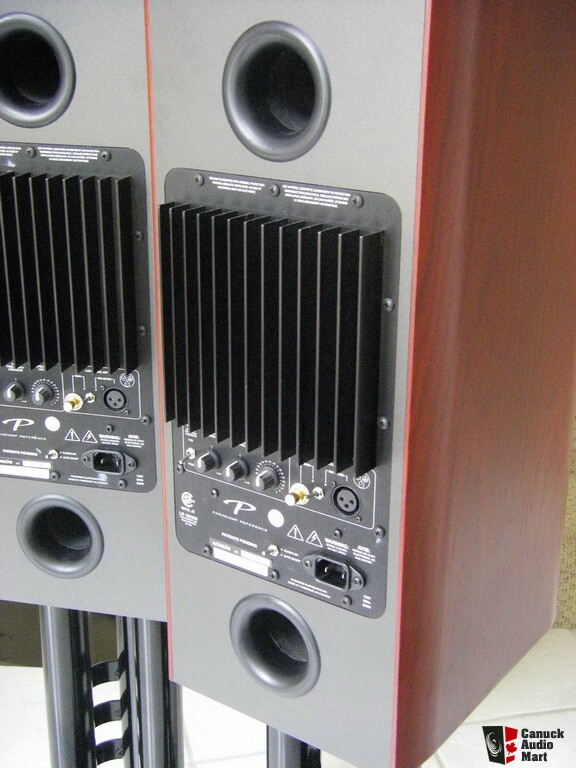I wasn't aware of this ":His statement flies in the face of what passes in most audio corners as commonly recognized facts. "
Active Speakers Better? No, per Michael Borresen
The best sounding speaker I have had the pleasure to hear is made by Borresen.
I recently spent time with Michael Borresen in Seattle at a show. It was slow so
I was able to speak with him for a time. I asked him if he plans an active speaker.
His answer was a definitive and immediate "No". He said separates sound better.
His statement flies in the face of what passes in most audio corners as commonly recognized facts.
Sadly I am too technically challenged to convey any of his further explanation.
I invite all intelligent commentary on this question. Theoretical or not.
- ...
- 75 posts total
To put it bluntly, passive crossovers are crude. That's why some sophisticated audiophiles prefer no crossover loudspeaker designs. A line level crossover can be much more precise while doing less damage (adding distortion) to the music signal. Couple a line level crossover with multiple power amps and it's possible for the designer to have more control over the final sound. The synergy is built into the loudspeaker and the audiophile doesn't have to search for some magical pairing of loudspeaker and amplifier. Active loudspeakers definitely have the potential for better sound compared to passive designs. |
@invalid , the active speakers have the amps inside, like a studio monitor. They have both XLR and RCA inputs, a high pass filter that can be engaged when using them with a sub, and knobs to adjust the volume and contour bass and treble. The controls are useful to really dial in the speakers when you place them. The center height channel is connected to a Dayton monoblock with a crossover setting and volume control. This helps me blend it the the active center channel. Here is a shot of the amp on the back of all the active speakers:
|
@onhwy61 , +1, I agree with all of the advantages you mention about active speakers as well as the space and savings on separate amplifiers and speaker cables. Each of these speakers are internally biamped and I have a lot of speakers. It wouldn't have been practical to biamp 13 speakers with external amps and the long runs of speaker wire. https://www.soundstagenetwork.com/revequip/paradigm_active40.htm |
The additional wire and type of wire should NOT be passed over, there are many measurements to indicate the issues there. Dampening factor losses, power losses, capacitance added with length, etc are the simple issues. There are more complex ones as well. There is a long list of differences detailed by so many in cables, how can these differences suddenly not matter when discussing active vs passive? In addition to the issues of wire and which ones sounds "right" or wrong, there are even more issues/problems: 1) phase: you cannot adjust driver phase in passive. A phase linear speaker system is very important to best possible sound. 2) Changes with heat and temperature of drivers: as drivers heat up, they change properties and interact with a passive crossover in a way that can change the crossover point, the sensitivity, etc. The long and short of this is that the speaker sounds different "hot" (on for 5 hours straight) vs. "cold". Not true in the same way with an active system. Most passives are NOT phase linear because you cannot have precision in adjusting this phase via passive components. With active, its easy. 3)The driver never "sees" the amp: there is a significant amount of stuff audio is traveling through (wires, inductors, coils, connectors, etc) permanently between all the speaker drivers and the amp. How can this be said to actually improve transparency? The obvious answer is it doesn't improve anything. It also makes it difficult if you replace drivers that have ever so slight difference in sensitivity: this is not adjustable unless you reengineer the entire crossover. 4) Adding a bunch additional circuitry seems to be a negative in almost all situations, many electronics companies talk about reducing the circuitry to improve performance. Why here, in this amp to speaker location, is it pitched as BETTER to add bunch of extra parts ? 5) If you are a speaker designer, that doesn't mean you are also an amp designer and vice versa. So most speaker companies must go elsewhere for amp designs, making the entire project more complex and involving more engineers. Few have both disciplines in the same house. (Genelec and ATC were the pioneering companies in active and their founders could do both). Comment? Brad
|
- 75 posts total


